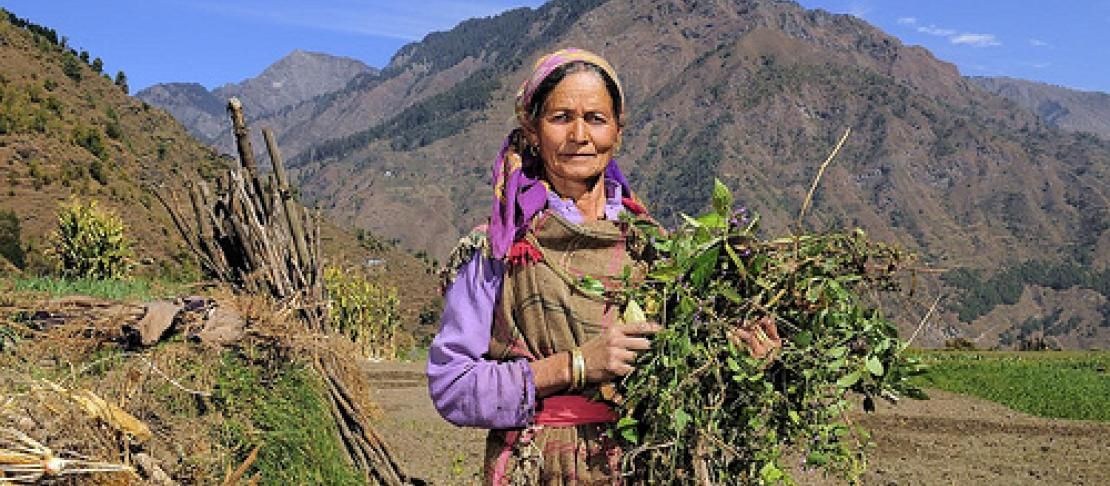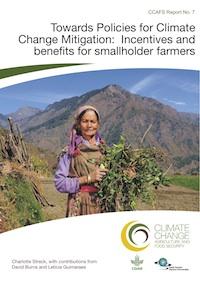Climate finance could help smallholders adopt sustainable agriculture

by Charlotte Streck and Leticia Guimares
Improving the efficiency of small-scale agriculture is essential for securing economic development, poverty alleviation and food security. At the same time, the agricultural sector is among the most vulnerable to climate change, and increasing climate resilience is a condition for increased productivity of smallholder systems. Agriculture also has significant potential to mitigate climate change, through emissions reductions and carbon storage. However, this is largely untapped.
Climate finance can be used as an instrument to help smallholders overcome some of the numerous barriers to investments in sustainable agricultural practices. It can catalyze the transition to a more resilient agricultural sector that reduces greenhouse gas emissions and increases carbon sequestration while fostering food security and promoting the local economic development. A new report developed by Climate Focus Towards Policies for Climate Change Mitigation: Incentives and benefits for smallholder farmers (PDF) provides an overview of climate finance instruments that can be used to support changes in smallholding practices and an assessment of how these instruments can be linked to mitigation actions. The conclusion of the report is that climate finance can be used as an instrument to overcome barriers to smallholders' adoption of sustainable agricultural practices by accessing new funds, designing new disbursement mechanisms, and forging new partnerships. The report was prepared for the CGIAR Research Program on Climate Change, Agriculture and Food Security.
 The potential to sequester carbon in soils, enhance aboveground biomass and reduce non-carbon dioxide emissions creates an opportunity for the agricultural sector to benefit from mitigation finance. Smallholders can tap into this opportunity provided that adoption barriers can be successfully addressed. The most prohibitive barriers that prevent smallholders from accessing new technologies and practices often occur at the adoption stage: poorly functioning input and output markets; weak local institutions and infrastructure; inadequate extension systems; and a lack of credit and insurance markets. The first condition for the adoption of new agricultural practices is the prospect of a net benefit for the farmer. The second condition is that the farmer can overcome potential financial, capacity and knowledge constraints to access such opportunities. The eventual benefits related to the adoption of new practices have to outweigh the costs associated with the removal of associated barriers, both for the farmers and for the policy makers in charge.
The potential to sequester carbon in soils, enhance aboveground biomass and reduce non-carbon dioxide emissions creates an opportunity for the agricultural sector to benefit from mitigation finance. Smallholders can tap into this opportunity provided that adoption barriers can be successfully addressed. The most prohibitive barriers that prevent smallholders from accessing new technologies and practices often occur at the adoption stage: poorly functioning input and output markets; weak local institutions and infrastructure; inadequate extension systems; and a lack of credit and insurance markets. The first condition for the adoption of new agricultural practices is the prospect of a net benefit for the farmer. The second condition is that the farmer can overcome potential financial, capacity and knowledge constraints to access such opportunities. The eventual benefits related to the adoption of new practices have to outweigh the costs associated with the removal of associated barriers, both for the farmers and for the policy makers in charge.
Lack of investment and credit count among the most important barriers to the adoption of new practices among smallholder farmers. It is in this context that climate finance provides a new opportunity to channel resources into agrigultural systems. Finance for climate change mitigation can be delivered through public sector-backed grants, loans, guarantees or other instruments. Alternatively, it can come from private sources, either through carbon markets or climate-motivated investments. Finance sources include fast-start climate international, bilateral and multilateral funds that may be used to support improved, low-emission and adaptation activities in the agricultural sector.
Climate finance should be used to support the development of viable agricultural carbon transaction models and build investor confidence by covering transaction costs, making strategic purchases of agricultural carbon credits and directly financing strategic projects. While the longer work of creating a more sustainable, climate-resilient and low-emission agricultural sector will be a multi-decade project, developing countries can readily engage to support smallholders that invest in sustainable agricultural practices. Financial incentive programs have to be consistent with readiness activities at the institutional and regulatory levels. Such activities include strengthening of institutions, increasing measurement capacities, and assessing potential policies, but also putting in place domestic incentive systems for the implementation of improved agricultural practices and piloting such initiatives that, if successful, could eventually be scaled-up. Given the varied nature of farming systems across the world, effective incentive mechanisms must also be tailored to local realities and supported by a general set of enabling socio-economic conditions.
Featured report: CCAFS Report 7. Towards Policies for Climate Change Mitigation: Incentives and benefits for smallholder farmers (PDF) by Charlotte Streck
Related report: CCAFS Report 6. Mechanisms for agricultural climate change mitigation incentives for smallholders (PDF) by Tanja Havemann and Veruska Muccione
Read more about our work on Pro-poor Climate Change Mitigation
Story by Charlotte Streck, Director of ClimateFocus and Leticia Guimaraes, a consultant at ClimateFocus.


